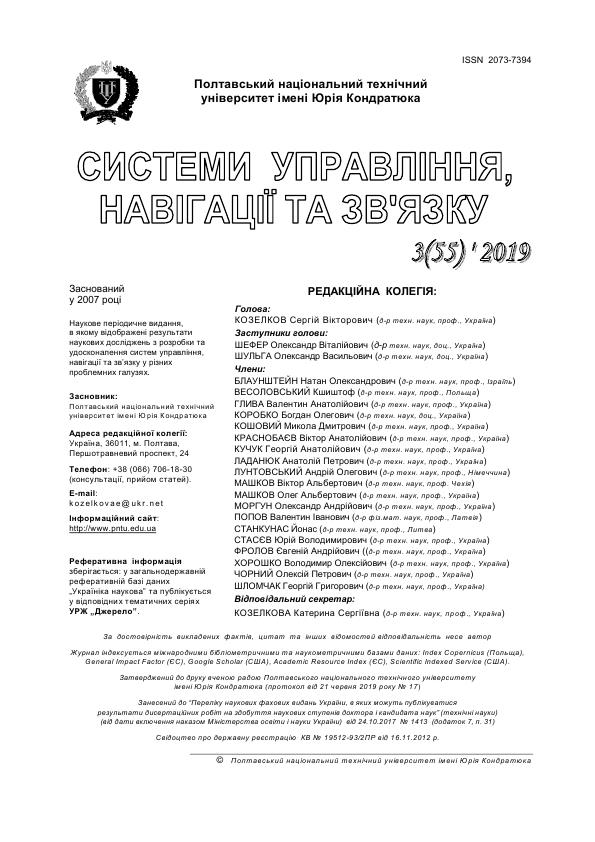THE CONCEPT OF DESIGNING EXPLANATIONS IN THE RECOMMENDER SYSTEMS BASED ON THE WHITE BOX
DOI:
https://doi.org/10.26906/SUNZ.2019.3.156Keywords:
recommender systems, e-commerce systems, explanation, the context of decision-making, the formation of recommendations, the formation of explanationsAbstract
The subject matter of the article is the processes of formation of explanations in the recommender systems. The goal is to develop a conceptual model for forming explanations in the recommendation systems on the basis of the white box, so that the user of such a system could get an explanation for the sequence of the formation of recommendations, taking into account the capabilities of the advisory system. Tasks: to highlight the basic characteristics of explanations in intelligent systems; to develop a conceptual scheme for constructing explanations according to a structural principle; to develop a conceptual model for forming explanations based on the principle of a white box. The principles used are: structural or the principle of a white box and functional, or the principle of a black box. The following results are obtained. The basic characteristics of explanations in intelligent systems are given, which gives the opportunity to formulate explanations for outputting the result on the principle of a white box and an explanation for interpreting the resulting result on the basis of the black box. The conceptual scheme of construction of explanations is developed, which links the constraints and conditions of the choice of the user with the rating list of goods and services. The conceptual model of explanation formation based on the principle of a white box is developed. Conclusions. Scientific novelty of the results is as follows. A conceptual model for constructing recommendations based on the principle of a white box is proposed, taking into account structural constraints and the conditions for constructing recommendations. Restrictions are determined by the categories and properties of the objects, as well as by the characteristics of the user. The conditions are set through the sequence of interaction of the user with the advisory system, as well as the results of the selection of similar users. The developed model provides the opportunity to formulate a general scheme for constructing explanations. Such a scheme provides an opportunity to increase the user's trust in the recommendations received by explaining the sequence of construction of the rating list of goods by the recommender system.Downloads
References
Adomavicius G. and Tuzhilin A. (2005), “Towards the Next Generation of Recommender Systems” A Survey of the State-ofthe-Art and Possible Extensions, IEEE Transactions on Knowledge and Data Engineering, No. 17, pp. 634–749.
C. Aggarwal “Recommender Systems: The Textbook”, New York: Springer, 2017, 498 p.
Bennet J. and Lanning S. (2007) “The Netflix Prize”, Proceedings of KDD cup and workshop, available at : http://www.netflixprize.com (last accessed May 28, 2019).
Linden G., Smith B. and York J. (2003), “Amazon.com recommendations: Item-to-item collaborative filtering”, Internet Computing, IEEE 7, 1, pp. 76–80.
Saga, R., Hayashi, Y., and Tsuji, H. (2008), Hotel Recommender System based on User’s Preference Transition, IEEE International Conference on Systems, Man and Cybernetics (IEEE/SMC 2008), 2437- 2442.
Jannach D., Gedikli F., Karakaya Z., Juwig O. (2012) Recommending Hotels based on Multi-Dimensional Customer Ratings. In: Fuchs M., Ricci F., Cantoni L. (eds) Inf. and Communication Technologies in Tourism 2012. Springer, Vienna, pp. 320-331.
I. Shilling “Attack detection for recommender systems based on credibility of group users and rating time series”, https://doi.org/10.1371/journal.pone.0196533 [Published: May 9, 2018].
S. Cleger-Tamayo, J. M. Fernandez-Luna, J. F Huete (2012) “Explaining neighborhood-based recommendations”, in The 35th International ACM SIGIR conf. on Research and development in information retrieval, ACM, 2012, pp. 1063–1064.
N. Tintarev, J. Masthoff “Evaluating the effectiveness of explanations for recommender systems”, in User Modeling and User-Adapted Interaction, 2012, № 22(4), pp.399–439.
N Tintarev, J Masthoff (2007). A Survey of Explanations in Recommender Systems. In G Uchyigit (ed), Workshop on Recommender Systems and Intelligent User Interfaces associated with ICDE’07, pp. 801-810.
Cunningham, P., Doyle, D., Loughrey, J. (2003) An Evaluation of the Usefulness of Case-Based Reasoning Explanation. In: Case-Based Reasoning Research and Development: Proce. ICCBR. Nu. 2689 in LNAI, Trondheim, Springer, pp. 122–130.
Aamodt, A. (1991). A Knowledge-Intensive, Integrated Approach to Problem Solving and Sustained Learning. Ph.D. thesis, Norwegian Institute of Technology,Department of Computer Science, Trondheim, available at http://citeseerx.ist.psu.edu/viewdoc/download?doi=10.1.1.141.503&rep=rep1&type=pdf, (last accessed May 28, 2019).
Чалий С.Ф., Лещинський В.О., Лещинська І.О. (2018). Моделювання контексту в рекомендаційних системах. Проблеми інформаційних технологій, 1(023), 21-26.
Чалий С.Ф., Лещинський В.О., Лещинська І.О. (2018). Інтеграція локальних контекстів споживачів в рекомендаційних системах на основі відношень еквівалентності, схожості та сумісності. Process mining Materials of the VII International Scientific Conference «Information-Сontrol System and Technologies»,142-144.
Чалый С.Ф., Прібильнова І.Б. (2017). Побудова ситуаційного представлення знань на основі аналізу логів. Вісник НТУ "ХПІ". Серія : Системний аналіз, управління та інформаційні технології, 28(1250), 70-73.




